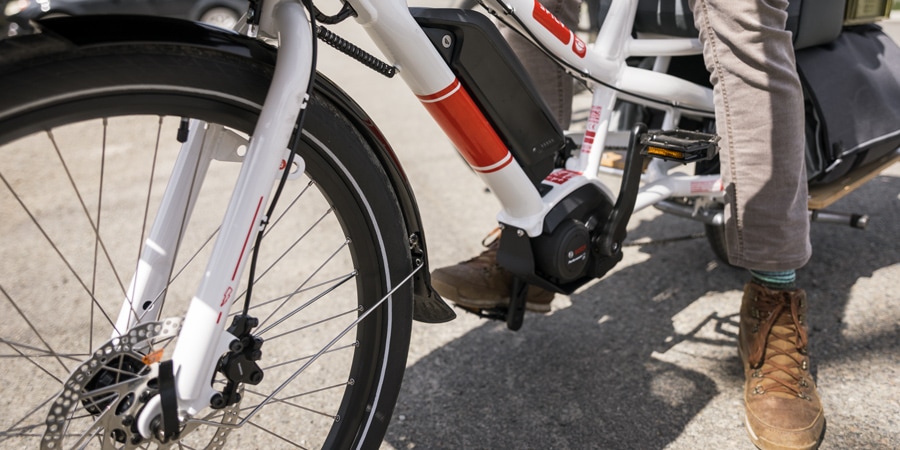Whether you're thinking about buying your first electric bike (e-bike) or are the proud new owner of one, you'll need to know a few things about how to care for it. It's a sophisticated piece of technology, but with regular maintenance and care, your e-bike will pedal smoothly for years to come. Proactive maintenance can also prevent unnecessary repair costs down the line.
The first thing to realize about an e-bike is that it is first and foremost a bicycle, so it requires the same basic maintenance as a non-electric bike. Check out the other articles in our Intro to Bike Maintenance series to learn more.
Many of the tips below are simple enough that a novice bike mechanic can undertake them, while others may require more skill. If you're unsure, take your e-bike to an REI Bike Shop or other local bike shop for help.
Compared to a non-electric bike, an e-bike is heavier, stronger and more complex, so you have a few additional maintenance considerations:
- Set up a regular maintenance schedule. Whether you do it yourself or take your e-bike into a bike shop, tune your bike yearly (before riding season), or more often if you riding frequently.
- Top off battery charge whenever you have the chance. And conserve power as you ride, because pedaling an e-bike with a dead battery is best left to superhero types.
- Keep tires properly inflated. An e-bike needs good footing underneath. Also, be sure you can fix a flat if needed.
- Check brakes regularly. You want your e-bike's stopping power to be a match for its pedal-assist power.
- Regularly clean, lube and inspect your chain. E-bikes ask a lot of this vital link in the drivetrain system.
Video: How to Maintain an E-Bike
What about motor maintenance? The good news here is that most e-bike motors are designed to be maintenance-free. If a problem arises (a rarity), then the fix likely requires replacing the whole unit.
How Often Should I Get My E-Bike Serviced?
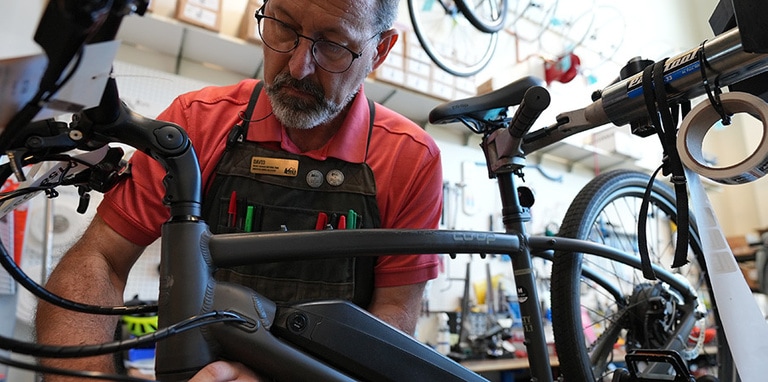
Consult your owner's manual for suggested service levels. Some e-bikes have recommended maintenance cycles programmed into the bike's computer.
How often should you service your e-bike? We asked David Martin, a shop service lead at the REI Bike Shop in Bellevue, Washington, for guidelines on when to bring your e-bike in for a basic tune.
(During a basic tune at an REI Bike Shop, a trained technician will true your wheels, make sure the brake systems are operating properly, check the condition of the brake pads, drive train and chain, among other things).
Because e-bikes are heavier, and people tend to ride them faster and over longer distances, e-bikes will typically require more frequent maintenance; it's a good idea, for example, to monitor the wear on your tires, brake pads, chain and drivetrain regularly. How often you take it in for a basic tune will depend on how many miles you ride and in what conditions. Here are some guidelines for how often you should service your e-bike:
At the start of your riding season, bring it into a bike shop to get it checked out.
- If you're an occasional rider (say, you're riding once a week or on weekend), regular maintenance (tune-up) once a season would probably be fine.
- If you're a frequent rider who commutes to work or uses your e-bike regularly on weekends and rides about 100-150 miles a week, consider a basic tune once every 3 to 4 months, or every 1,000 miles or so. Basic at-home bike maintenance like keeping your bike cleaned and lubricated can also extend the time.
Also, pay attention to noises and squeaks. E-bikes aren't whisper quiet, but if you start to hear noises, rattles or squeaks, or sounds that aren't typical, that's also another good time to bring it into a shop. Regular bike maintenance can help prevent these issues from developing.
Finding a qualified bike shop
Not all bike shops are experienced with e-bikes, and shops that do service them might not service the brand or type of e-bike you bought. The only way to be sure is to check directly with service providers (like an REI Bike Shop) in your area. If you haven't bought an e-bike yet, keep shop services in mind as you look. If you buy from a local store, ask about their service department. If you buy from an online-only seller or convert your regular bike with a kit, it will be harder to find a shop to service it. (For general buying advice, read How to Choose an Electric Bicycle).
Maximize Battery Range
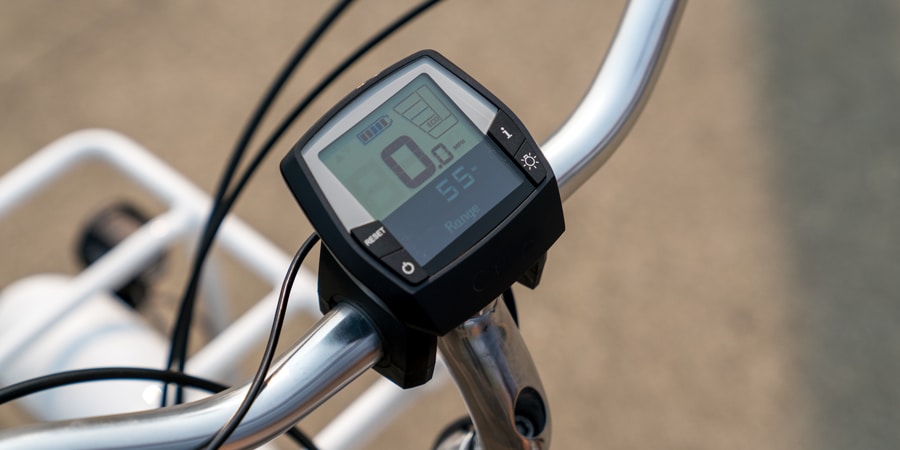
Not surprisingly, e-bike riders are keenly interested in how far they can go before their battery runs out of juice, so it's important to both charge and ride wisely. The good news is that it's fairly straightforward how to extend the range of your electric bike battery:
- Top off the battery charge whenever you have the chance
- Use eco mode as much as possible
- Pay attention to wind resistance
Charging: Batteries can be recharged thousands of times, so even regular riders will get multiple years of use before needing to replace a battery. So go ahead and charge the battery any time an outlet is handy. Commuters sometimes keep a separate charger at work for this reason.
For long-term storage, it's better to store the battery with a 30% to 60% charge (check your manual for details). Note, too, that cold temperatures can quickly drain the lithium-ion batteries used in e-bikes, so store your battery (or the bike if the battery isn't removable) in a heated space whenever temperatures turn frosty.
Riding: Eco mode (or whatever the lowest assist level is called on your bike) extends battery life. Conversely, turbo (the top mode) drains it quickly. A higher cadence (spinning the pedals faster) is also a more efficient way to ride.
Wind resistance: Even on a calm day you encounter wind resistance simply through your own forward motion. The effect is roughly exponential, meaning that increasing speed from 10 mph to 15 mph (by 50%) requires double the energy output (which both you and your battery provide on an e-bike) to overcome the resulting increase in wind resistance.
So, if you're approaching the limit of your battery range, going a bit slower can help you ride farther on less juice. You can't do anything to combat the effects of a naturally occurring headwind, of course—just be mindful of the fact that it will also drain your power more quickly if you want to maintain a given speed.
Battery handling: They're heavy and expensive, so take care when attaching and detaching a battery. Always follow the e-bike manufacturer's instructions on battery care and charging. (A damaged battery can also generate dangerous levels of heat.)
Take Good Care of Your Tires
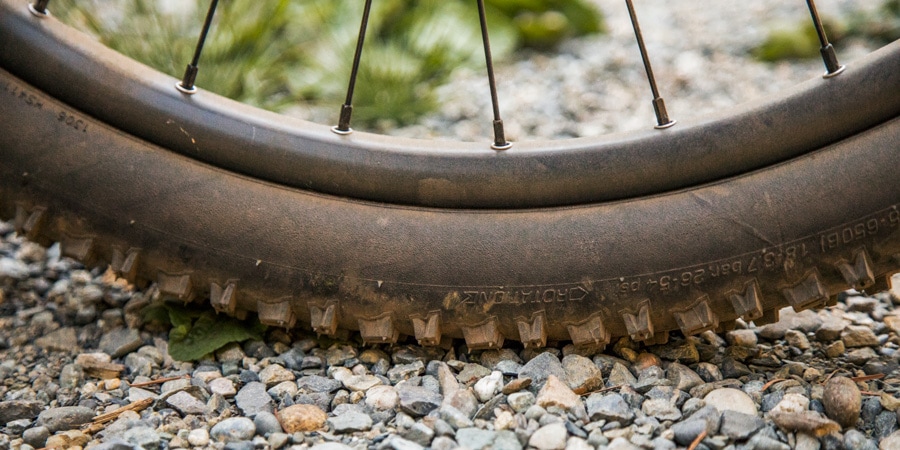
Having a motor plus a battery, as well as a beefier frame to support those components, makes e-bikes far heavier than conventional bikes. So it's important to ensure you have a good set of tires underneath your e-bike:
- Keep tires inflated properly. Check psi levels and top tires off before each ride because underinflated tires don't roll efficiently nor support your bike well.
- Know how to fix a flat. On a bike with a mid-drive motor, flat repair is the same as it is on a conventional bike. Hub-drive motors are more complex, though, requiring you to know how to disconnect and reconnect all the electric connections involved.
- Learn steps you can take to avoid getting a flat because it's simpler than having to fix one in the field. Wrangling a heavy e-bike, too, can make even simple flat repairs more difficult.
- Get replacement tires made for e-bikes. They have sturdy sidewalls, good traction and some puncture resistance, all good qualities when it's time to retire your tires with worn tread. (Brands like Continental, Michelin, Schwalbe and Kenda have been making "e-tires" for years.)
Take Good Care of Your Brakes
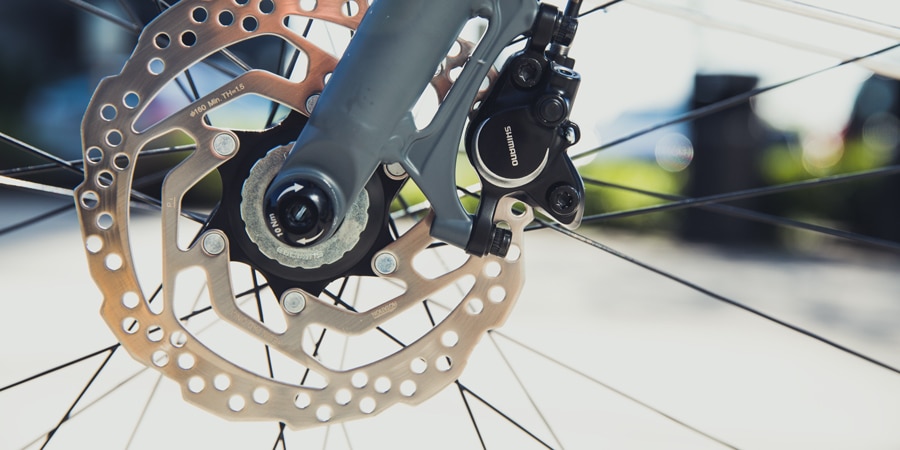
A bike that's both heavy and fast (pretty much all e-bikes) needs to have adequate stopping power:
- Regularly check and adjust the brakes. Before each ride, look for obvious issues like loose parts or excessive rotor and pad wear. Between rides, do a more thorough brake inspection. If you're not comfortable performing maintenance beyond the examination phase, then have your shop inspect and do needed brake repairs.
- Replace brake pads and rotors promptly. Check manufacturer specs for the wear level that signals the need for replacement.
Take Good Care of Your Chain
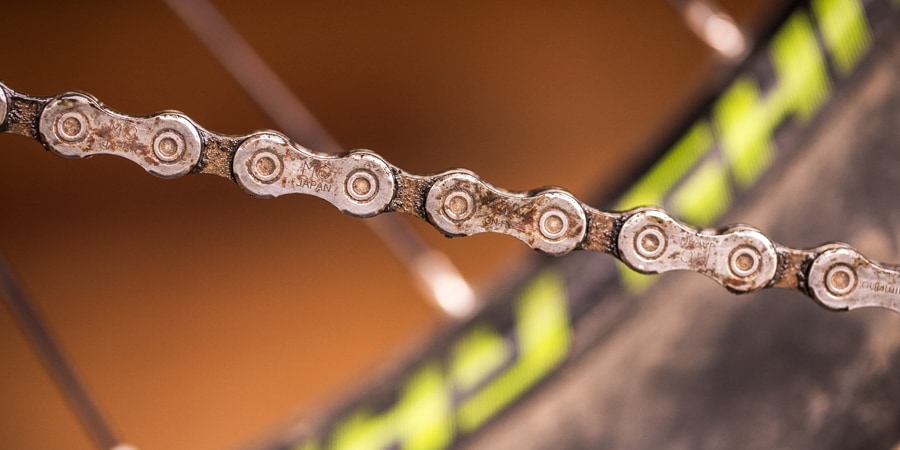
Your chain gets a high level of general wear and tear, thanks again to the mass and speed of an e-bike. Because of tolerances within drivetrain components, chains can only be so beefy, too. So keep a close eye on the chain and service it regularly:
- Clean and lubricate your chain regularly. You want the lube to remain inside the chain to minimize grit and grime from building up on the surface. That usually involves wiping the chain off with a rag to remove old oil and dirt, and applying fresh lube sparingly. Then wipe off as much excess lube as you can because it will just attract more grit. (Lubes designated as "dry" are a good option for fair-weather riders.)
- Regularly check and repair or replace the chain. A chain wear indicator tool is easy to use and will alert you to when it's time to replace the chain before the rest of the drivetrain suffers from too much wear.
Read our full Drivetrain Maintenance series if you'd like to do even more for your e-bike in your home workshop.
If your e-bike has a belt drive system, then there's no need to clean and oil. Just keep an eye on the belt wear and replace it according to the schedule your bike maker recommends.
